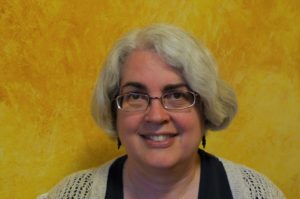 Sally Weaver Glick is from Goshen, Indiana, where she is a spiritual director and a pastor at Open Table Mennonite Fellowship. She is a member of the steering group of Mennonite Spiritual Directors Network.
Sally Weaver Glick is from Goshen, Indiana, where she is a spiritual director and a pastor at Open Table Mennonite Fellowship. She is a member of the steering group of Mennonite Spiritual Directors Network.
In the morning quiet, I am reading Luke 10:38-42, Jesus’ visit with Martha and Mary, lectio divina style. I read slowly, picturing the familiar story. Jesus arrives; Martha welcomes him into her home. Her sister Mary sits and listens to Jesus like a disciple. Martha, distracted by her many tasks, comes to him and urges him to tell Mary to help her. “Martha, Martha,” he says, “you are anxious and troubled about many things.”
I pause. The phrase echoes in my ears. “You are anxious and troubled about many things.” Indeed. Jesus is speaking to me. My “many things” aren’t anything major, just the anxiety and tension of juggling my spiritual direction work, a part-time pastoral position, writing projects, helping octogenarian parents, managing household tasks, maintaining relationships with family and friends. Crises are clear. This is just too much to do and few clear deadlines. Even when everything is humming along relatively smoothly, there is an underlying layer of worry and distraction. Whatever I am doing, all the things I am not doing hang around in the background, nagging at me to notice them.
Only one thing
I sigh. “You are anxious and troubled about many things.” The sympathetic voice goes on: “Only one thing is needful.”
Only one thing is needful. The phrases shimmer. You are anxious and troubled about many things. Only one thing is needful. I ruminate. One thing. Many things. Anxious and troubled. Only one thing is needful.
I ponder. I settle into prayer. Only one thing is needful. Listening to Jesus like a disciple, like Mary, of course, as I am trying to do with this lectio time, but am I hearing an additional invitation? Only one thing is needful. Of this clamoring crowd of tasks, is one more needful than the others? I let the question echo. What is the needful thing? Not my priority, Jesus, but yours.
Slowly, in the silence, I sense a response. One task surfaces. It’s not the one at the top of my to-do list, it’s not one that I would have said was the most urgent or the most important. But it settles into place with a feeling of rightness. Today, this is the needful thing, the place to begin. I rest in a place beyond words. As I move out of the quiet time, I test that sense of this one task being the needful thing for this morning. It still feels right, so I move to that task. The day flows on smoothly from one thing to another, that background nagging from other tasks stilled for now.
And when they start nagging again on other days, I return to my question. What is the needful thing, Jesus? And I wait, lectio style, to see which one surfaces.
Read, reflect, respond, rest
Read. Reflect/ruminate. Respond. Rest. These are the four faces of the practice of lectio divina, or divine reading. Lectio divina is a centuries old prayer practice that approaches the text seeking to encounter the living Word through the written Word, allowing this encounter to shape and transform us. We read a short passage slowly, noticing a word, phrase, or image that stands out for us; we stay with that phrase, savoring it and letting it echo in our hearts and imagination; we respond with prayer interaction through words, thoughts and feelings; we move beyond words to rest in God.
The word I receive, the reflection, the response, all speak to this particular day, this particular moment in my life. The next time I do lectio with this passage, another phrase will likely stand out, leading to another prayer conversation. Others reading the same passage, as I have experienced in weekly lectionary groups, will each find the word and the invitation that connects for them. While lectio is traditionally practiced individually, there are variations for groups, weaving our individual invitations together in life-giving ways.
___________________________
You can learn more about lectio divina at Sally’s website, swglick.com. She is starting to add reflections on a sustained lectio divina, her travels with Luke 10:38-42 over several months, to her contemplative photography blog, Sparks of Light.

